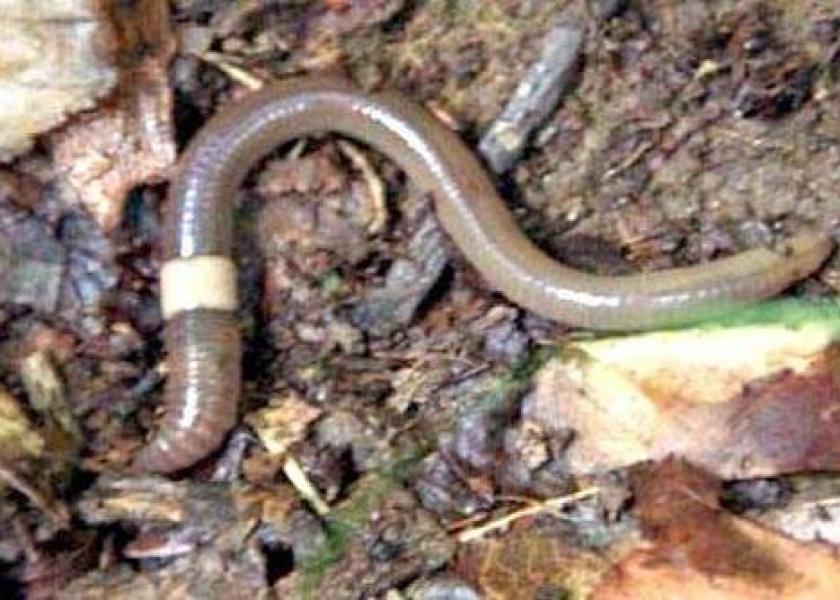Invasive Jumping Worm Thrashes Into 14 Midwest States

Growing up to 6” in length and able to cause an infestation with only one worm, the invasive jumping worm, originally from eastern Asia, has spread to over a dozen states in the Midwest, according to a Smithsonian Magazine article. These states include Iowa, Nebraska, Kansas, Oklahoma, Texas, Missouri, Wisconsin, Illinois, Indiana, Minnesota, Ohio, Kentucky, Tennessee and Louisiana, Newsweek reported.
Getting its name from their characteristic thrashing, snakelike movement, these worms can be found on the soil surface, in leaf litter, in compost piles and along roads, said an article by Cornell University. In addition, their characteristic white band, known as the clitellum, is flush with their metallic body. It can be distinguished from the nightcrawler which has a reddish-brown, saddle shaped clitellum.
The Asian jumping worm devours organic matter and seedlings more rapidly than its counterparts and can severely damage roots and disturb the soil, the Cornell article explained. An infestation of these worms will likely be seen in a “very uniform, granular soil created from worm castings. The texture of this soil is often compared to coffee grounds.”
“Jumping worms grow twice as fast, reproduce more quickly and can infest soils at high densities. In areas of heavy infestation, native plants, soil invertebrates, salamanders, birds and other animals may decline,” said the Cornell article.
As an annual species, the adult worms die after the first freeze. However, their cocoons, which are about the size of a mustard seed, will survive through winter and hatch when temperatures reach 50 degrees. Their cocoons are nearly impossible to find, and “can be spread easily in potted plants, on landscaping equipment, mulch, tire treads and even hiking boots,” said the Cornell article.
Unfortunately, there is currently no method of control for the species. Cornell experts along with the Wisconsin Department of Natural Resources encourages those who find the worms to not use them as bait or in gardening. Live worms can be destroyed by bagging them, leaving them in the sun for at least 10 minutes and then throwing them away.
Research continues on how these jumping worm populations can be controlled.







